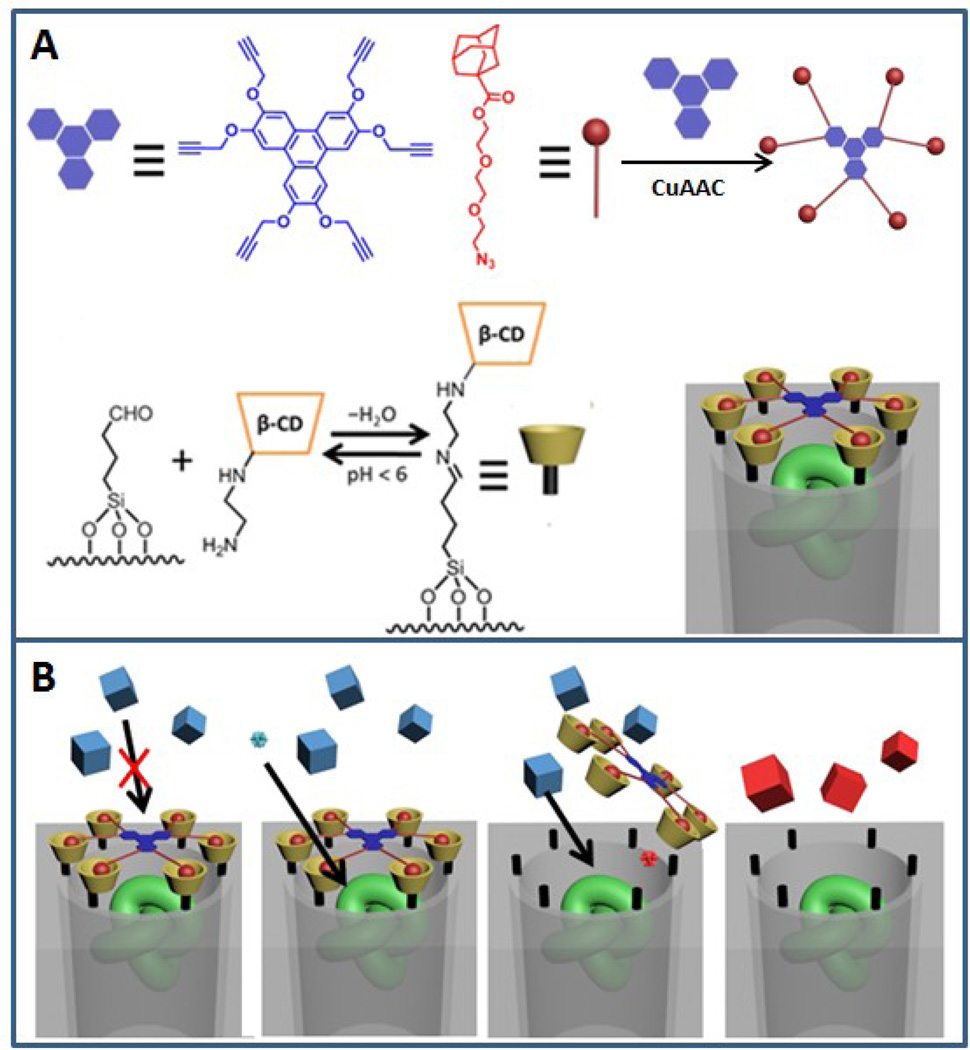Figure 1.
A) Assembly of the nanogate-based amplifier. The capping agent is synthesized using a Cu catalyzed azid-alkyne coupling reaction. The green knot represents the enzyme molecule that is trapped in the pore. B) The mechanism of the self-amplifying chemical sensing process. The size selectivity of the nanogate enables separation of the substrate (blue cubes) and the enzyme. A small analyte molecule (blue ball) actuates the nanogate, which opens the access to the enzyme and fluorescent products are generated catalytically.

